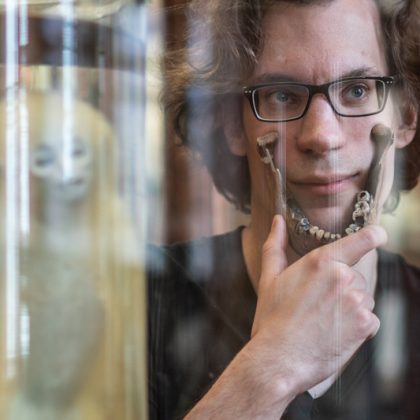Preference of sexually dimorphic scales across populations and sexes
According to evolutionary theory of human attraction, facial traits which are perceived as attractive are honest cues of various aspects of biological fitness, in particular healthiness and fertility. Furthermore, they provide specific cues to psychological characteristics that are important in partnership and childbearing. By preferring attractive individuals as mates, people aim to maximise their own reproductive success.
There is some variation in the perception of facial attractiveness between individuals belonging to the same local population, but people from similar cultural backgrounds tend to perceive facial attractiveness similarly. Nonetheless, a growing number of studies report mixed results regarding agreement between raters from distant populations. It is not the case that members of distant populations either agree or disagree entirely. Across populations, people generally agree on preference of some facial features, like average facial traits or youthfulness and female femininity. Other facial traits, like skin colouration variance within a given population, present important cues for ratings of attractiveness only in some populations.
In men, masculine facial traits may be indicative of immunocompetence, formidability, and resource holding potential. They are, however, not consistently preferred. Substantial differences are found between studies conducted in different populations and even studies conducted in the same population often lead to different conclusions. It has been proposed that methodological differences regarding stimuli manipulation are at least in part responsible for this mixed result. Some studies use original non-manipulated facial photos as stimuli. Other studies use artificially masculinised and feminised stimuli, i.e., collect ratings of facial images that were computationally morphed to appear more male-like or female-like. This manipulation, nonetheless, may not reliably mirror perceived sex-typicality, potentially biasing the results on preference of sex-typicality. Moreover, studies often use one set of manipulated stimuli across distant and visually distinctive populations. Evaluation of faces by raters from populations that are distinctive in facial appearance may, however, cause people to perform worse on trait attribution, potentially biasing the results further.
We have conducted a set of non-confirmatory analyses to explore the association between perceived facial attractiveness, perceived and measured sexual dimorphism, measured facial averageness, and skin tone, measured as CIELab L*. We used sets of unmanipulated male and female facial stimuli from five populations (Cameroon, Colombia, Czechia, Iran, and Turkey) that were rated exclusively by local raters. We applied methods of landmark-based geometric morphometrics to compute each face’s morphological averageness and sexual shape dimorphism (SShD). We ran Pearson’s correlations and path analyses (multiple regression networks).
The hypothesis according to which people across populations prefer similar facial traits found support in our study only in part. Based on both Pearson’s correlations and path analyses, raters strongly preferred women that were perceived as more feminine in all the samples. Concerning preference for femininity, our results therefore converge with previous evidence that perceived female femininity, a proposed cue to sexual maturity, youthfulness, and reproductive health, may be a female characteristic that is universally preferred.
Regarding faces of men, raters across populations did not agree on the preferred degree of perceived sex-typicality. In Colombia and Czechia, male faces that were perceived as more masculine, were also perceived as more attractive, unlike in the rest of samples. In none of the samples, however, was there a statistically significant negative association between perceived masculinity and attractiveness. The result is likely not an artifact of study methodology as we used non-manipulated stimuli and raters from the local populations. Rather, different degree of the development of male sex-typical traits is preferred in different populations.
Morphometric variables were inconsistent predictors of perceived characteristics. Female-typical SShD was perceived as more attractive only in one out of five samples and more feminine in two samples. Male-typical SShD was not preferred in any sample; nonetheless, in three samples, it was positively associated with perceived masculinity. Darker men were perceived as more masculine in three samples. Lighter skin was perceived more attractive and feminine in Cameroonian women.
To conclude, sexual shape dimorphism, measured averageness (variables based on geometric morphometrics), and measured skin tone were not consistent predictors of perceived characteristics. On the other hand, in women, perceived femininity was closely related to perceived attractiveness across all the samples and is likely a universally preferred female facial characteristic. Measured and perceived sex-typicality likely tell a different story with respect to human facial preferences. Pooling results from studies that use manipulated and non-manipulated facial stimuli and measured and perceived sex-typicality should be avoided.
Authors:
This post is based on a study featured in the journal Evolutionary Human Sciences. The research team that authored the study consists of evolutionary and theoretical biologists and psychologists who once lived or currently reside in the five studied countries and are familiar with the local sociocultural environment. Most of the authors have also cooperated on other articles that dealt with variance of sex-typicality and averageness of facial configurations across various human populations, developed novel tools and identified scales to measure variability of facial features (both across and within populations). The authors also study human perception and associations between measured and perceived facial characteristics and measures of biological fitness across human populations.






